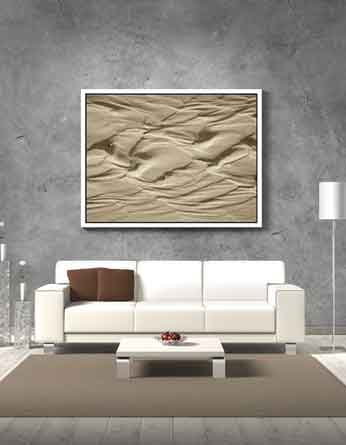Area Rug How They’re Made
Being familiar with area rug construction also helps you understand and evaluate performance aspects: why certain rugs wear better and longer. Understanding how area rugs are created helps you better determine rug value and keep you inside the borders of your budget.
Machine made
- Less expensive
- Not considered investments
- More flexibility and variety
- Woven rugs created on automated weaving looms
- Elaborate designs created by the placement of different colors of yarn
Man-made
- Handmade (also called hand knotted)
- Custom-made
- One of a kind designs
- Incorporate creative, brilliant uses of color
- Unique details and intricacies in each due to the village, city or country of the creator
- Often created with natural dyes for color longevity
- Considered an investment
- Many become heirlooms
- Ancient and unique process
Elements that tie any handmade rug together
WEAVE
- A technique used in making handmade rugs
Three major techniques: pile weave, flat weave and hand-tufted
Pile Weave
- Method of weaving used in most rugs
- The rug is woven by a creation of knots
- Different weaving groups use different types of knots
- Every single knot is tied by hand
- Can consist of 25 to over 1000 knots per square inch
- Skillful weavers tie knots in about ten seconds (meaning it would take a skillful weaver 6,480 hours to weave a 9x12-foot rug with a density of 150 knots per square inch)
- Time reduced with workshops or multiple weavers
Flat Weave
- Technique of weaving where no knots are used
- Warp strands used as the foundation
- Weft stands are used as the foundation and in the patterns
- Called flat weaves since no knots are used in the weaving process and the surface looks flat
Hand Tufted
- Created without tying knots into the foundation
- Pile height determined by the amount of yarn cut off
- Less time consuming than hand-tying each knot
- Requires a high level of craftsmanship
- Can be made faster than hand-knotted rugs
- Generally less expensive than hand-knotted
- Highly durable and accurate
- Weathers foot traffic for years
KNOT
- Woven by tying knots on the warp strands
- Two predominant types of knots: asymmetrical and symmetrical
Asymmetrical (Persian or Senneh) Knot:
- Used in Iran, India, Turkey, Egypt, and China
- To form, the yarn is wrapped around one warp strand and then passed under the neighboring warp strand and brought back to the surface
- Creates a finer weave
Symmetrical (Turkish or Ghiorde) Knot:
- Used in Turkey, the Caucasus, and Iran by Turkish and Kurdish tribes
Knot Density:
- Refers to the number of knots per square inch or square decimeter in a handmade rug
- Measured in the imperial system in square inches and in the metric system in square decimeters
- KPSI is sometimes used to indicate value
- Higher the number of knots per square inch, the higher the quality, and price
DYES/DYEING
- Process of changing the natural color of materials such as wool, silk, and cotton
- Two types of dyes: natural dyes and synthetic dyes
Natural Dyes:
- Natural dyes only used until the late 19th century
- Include plant dyes, animal dyes, and mineral dyes
- Plant dyes come from roots, flowers, leaves, fruit, and the bark of plants
- Woad, a plant from the mustard and indigo family, is used for blue dye
- Yellow is produced from saffron, safflower, sumac, turmeric, onionskin, rhubarb, weld, and rustic
- Madder, Redwood, and Brazilwood has been used since ancient times for reds
- Browns and blacks come from catechu dye, oak bark, oak galls, acorn husks, tea, and walnut husks
- Henna is used for orange
- For green, indigo that is over-dyed with any variety of a yellow dye is used
- Mineral dyes come from ocher (yellow, brown, red), limestone or lime (white), manganese (black), cinnabar and lead oxide (red), azurite and lapis lazuli (blue), and malachite (green)
Synthetic Dyes:
- Mid-nineteenth century, when demand for handmade rugs increased in the West, production increased in the East
- Need for easy-to-use and less expensive dyes with a wider range of colors caused the development of synthetic dyes in Europe
- Synthetic dyes imported to Persia (Iran), Anatolia (Turkey) and other Eastern countries
- First synthetic dye, Fuchsine (a magenta aniline), was developed in the 1850s
- Other synthetic aniline dyes followed, later banned by the Persian king
- Persian weavers discontinued the use of synthetic dyes until the modern synthetic chrome dyes developed between World Wars I and II
- Chrome dyes are colorfast, retain their intensity and are produced in a variety of attractive colors and shades
- Mostly chrome synthetic dyes are used for coloring weaving yarns
- Natural dyes are used in places where they are easily obtainable









